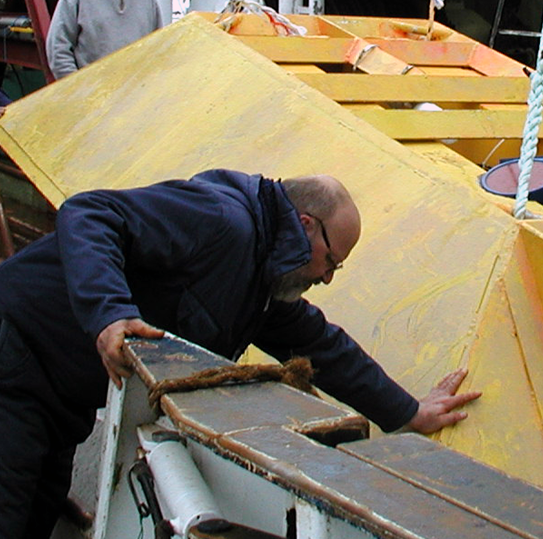- Research
- Fish tagging
- Lumpfish research
- Oceanography
- Seabed mapping
- Arnarfjörður
- Drekasvæði
- Ísafjarðardjúp
- Jökulbanki
- Jökuldjúp
- Kolbeinseyjarhryggur and adjacent area
- Kolluáll
- Langanesgrunn
- Látragrunn
- Nesdjúp
- Reykjaneshryggur and adjacent area
- Selvogsbanki
- South of Selvogsbanki
- South of Skeiðarárdjúp
- South of Skerjadjúp
- Southeast of Lónsdjúp
- Southwest of Jökuldjúp
- Suðausturmið
- Suðurdjúp
- Vesturdjúp
- East of Reykjaneshryggur
- Vestfjardarmid
- Seal research
- Whale Research
- Advice
- About
Seminar, October 17th - Bogi Hansen
16. October 2023
 Bogi Hansen, picture taken in the field.
Bogi Hansen, picture taken in the field.
Seminar on the flows across the Iceland-Faroe Ridge by Bogi Hansen, Faroe Marine Research Institute, Havstovan.
Bogi Hansen, scientist from Faroe Marine Research Institute, Havstovan, will host a short seminar at Hafrannsóknastofnun. The seminar will take place Tuesday the 17th of october at 12:30 in our big meeting room at Fornubúðir 5 in Hafnarfjörður.
Practical information
Time: 12:30-13:00, 17th of October
Place: The meeting hall in Fornubúðir 5, Hafnarfjörður
Stream: Live through MFRI's YouTube channel
Lecturer's language: English
The flows across the Iceland-Faroe Ridge
Across the submarine ridge between Iceland and the Faroes (IFR), water flows in both directions. In the upper layers, warm Atlantic water flows from the Iceland Basin to the Norwegian Sea (IF-inflow). Close to the bottom, cold water of Arctic origin dominates and some of this water crosses the ridge as IF-overflow. Both of these flows are part of the Atlantic Meridional Overturning Circulation (AMOC), which is projected to weaken with global warming.
The talk will include an overview of the exchanges across the whole of the Greenland-Scotland Ridge (GSR), their links to AMOC, and the mechanisms that generate them and provide most of them with a high degree of stability.
Recent claims that the AMOC and the “Gulf Stream” are already weakening are discussed. Most of the focus will be on the warm Atlantic flow across the IFR. This is the strongest Atlantic water flow across the GSR with a large transport of heat into the Arctic region.
From observations, we know its transport variations over the last three decades, but the pathways across the ridge have not been known. A series of current meter (ADCP) deployments in recent years has revealed a complicated – and variable – set of pathways, including retroflection over the ridge as well as a recirculation over the Rosengarten Bank.
Preliminary results from these deployments also show that the most persistent overflow sites on the IFR are located over its central parts and that the interactions between the IF-inflow and the IF-overflow control the variations of both flows, while intensive mixing between them induces strong modifications of their temperatures and salinities.
You can watch the seminar below:
